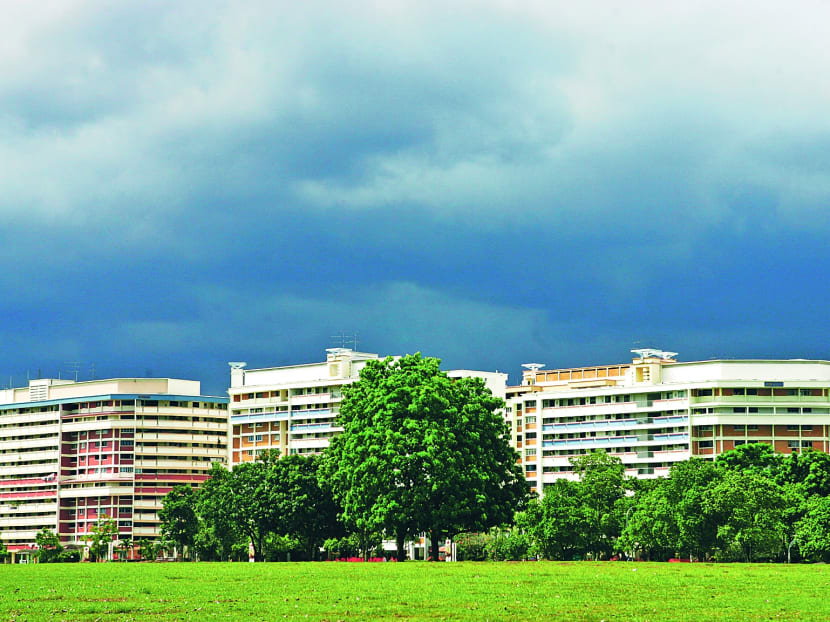HDB rental market still strong amid weakness in other segments
SINGAPORE — While the cooling measures and loan restrictions have dampened sentiment in various segments of Singapore’s property market, leasing demand for public housing has held up relatively well, with an increase in transactions in the first two quarters this year helping to keep rental rates fairly steady.

In the first half of this year, 93,700 HDB flats were added to the pool of flats eligible for rental. Today file photo
SINGAPORE — While the cooling measures and loan restrictions have dampened sentiment in various segments of Singapore’s property market, leasing demand for public housing has held up relatively well, with an increase in transactions in the first two quarters this year helping to keep rental rates fairly steady.
This trend continues even as data by the Housing and Development Board (HDB) and Urban Redevelopment Authority showed last week that prices of resale public homes and private residences have declined further, hit by measures such as the tighter Mortgage Servicing Ratio, the Additional Buyer’s Stamp Duty as well as the Total Debt Servicing Ratio framework.
Analysts point to the increasing number of expatriates who have opted to stay in cheaper accommodation instead of private condominiums as the main support for the HDB rental market. “Many expatriates are on a tighter rental budget, so they turn to HDBs because it’s much cheaper. We know of expatriates whose housing budget has been cut and they don’t really have a choice but to rent HDB flats,” said Mr Chris Koh, director of Chris International.
Another group that has propped up demand is new permanent residents (PRs) — the Government ruled in August last year that they would have to wait three years after obtaining residency to purchase resale HDB flats.
That prompted new PRs such as Mr Tan SW to extend his lease for a three-room flat in Bukit Batok. “My wife and I got our PR in late 2012. We started hunting for a resale flat hoping that we could move in when our (rental) contract ends but the Government announced the policy, so we ... had no choice ... to extend the contract,” he said.
But while rental volume has grown from an average of 6,900 transactions per quarter in 2010 to about 8,500 units every quarter so far this year, that has not translated into an increase in rents: Prices have stayed relatively flat owing to the increasing supply of flats eligible for subletting, analysts noted, with the Singapore Real Estate Exchange’s HDB rental index declining by 3.4 per cent in June this year from the same period last year.
That trend comes as HDB data shows that the number of flats approved for subletting has increased, from 35,000 as of the end of 4Q 2010 to 45,674 as of the end of 4Q 2013.
Said Mr Eugene Lim, key executive officer of ERA: “There’s a lot of supply. Recently, quite a few condos got their temporary occupation permit, and HDB upgraders who have collected their keys still want to hold on to their flats, so they ... rent out their flats after they have moved to their new condos.”
Analysts said this trend is set to continue as homeowners look to reap the higher rental yields that HDB flats can fetch. Said Mr Koh: “HDB flats can command a good 6-8 per cent of rental yield, while the yield for private homes is in the range of 2-3 per cent … As more people are opting to rent out their flats after moving into private units, rents will stay under pressure.”
But while the HDB rental market remains robust, the softening private rental market could start to eat away at demand, Mr Lim pointed out, with condos an increasingly viable option even for tenants who are on a tight budget. This could chip away at HDB rental yields. “Rents have been quite stable because of the supply but now there’s also competition from the condo market. People with a budget of S$3,000 or a little more have options to rent condos, so there’s a cap on the increase of HDB rents,” said Mr Lim.
Correction: An earlier version of this article mentioned that the number of HDB flats approved for subletting has increased from 126,500 new approvals in 2010 to 179,600 last year. This is incorrect. The number of flats approved for subletting is updated at the end of every quarter. As of the end of 4Q 2010, the number was 35,000 and as of the end of 4Q 2013, the number was 45,674. We apologise for the error. This article was updated on Aug 8, 2014 at 5.00pm.





